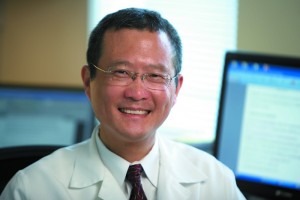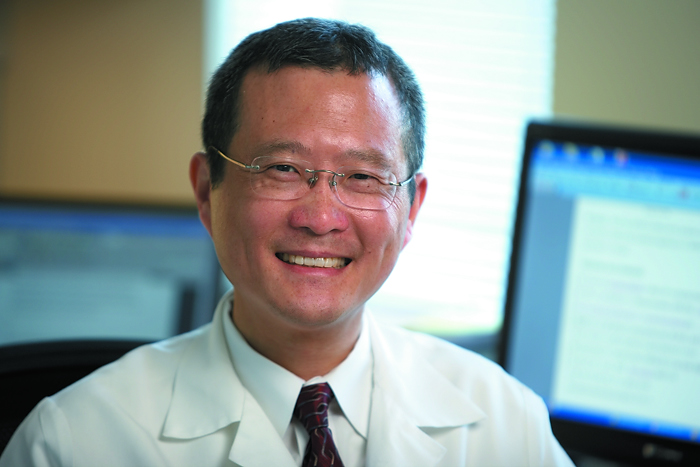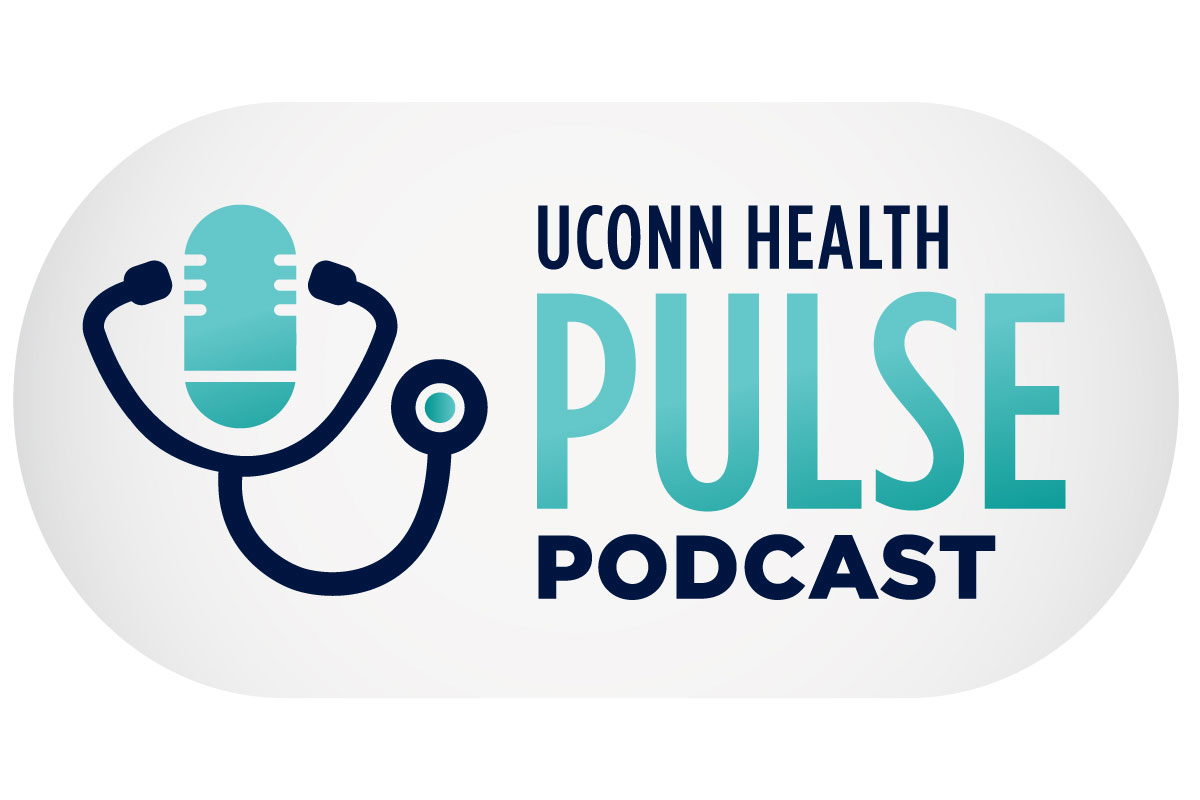From the UConn Foundation’s e-newsletter, Our Moment

The news spread throughout the scientific world: Cardiologists at the UConn Health Center had identified a protein fragment that – when detected in the blood – would serve as a warning that a heart attack was on its way.
Accompanying the news stories was a photo of a grinning Dr. Bruce Liang, the Health Center cardiologist who had led the study. Educated at the nation’s most prestigious schools, Liang and his research were already having an impact on a disease that kills one person every minute in the United States according to the American Heart Association. And he hadn’t even wanted to be a cardiologist.
As a student, he was fascinated by the endocrine system, and decided that the field held great promise in applying research advances to clinical medicine. But science changes quickly, and while at Harvard Medical School, he discovered translational research in cardiology. “To do clinical medicine and research and link up the two,” he says, “that would be incredible.”
Liang was swayed. But another event was to propel him further toward cardiology, one far more emotional than his experience at medical school. Doctors discovered that Liang’s father, then 60, had a previously undiscovered hole between the right and left sides of his heart. “I was young, barely finished with my training,” says Liang, who was born in Taiwan and arrived in the United States at 15. To be able to combine research with clinical practice and help patients like his father would fuse his priorities into a single inspirational career.
Liang’s education is a testament to his academic brilliance and drive: he spent his residency at the Hospital of the University of Pennsylvania, and held cardiology fellowships at Brigham and Women’s Hospital in Boston and Harvard Medical School. Yet his upscale education belies his manner. He is engaging, warm and kind, popular among his peers, patients, and students.
UConn used the lure of an endowed faculty chair to attract Liang to the Health Center. Now the Ray Neag Distinguished Professor of Vascular Biology and Cardiology, Liang also directs the Pat and Jim Calhoun Cardiology Center, is chief of the UConn Division of Cardiology, and is interim dean of the School of Medicine.
“The chair definitely helped recruit and retain me,” he says. “Well, not so much the chair per se, but the people (longtime UConn benefactors Ray and Carole Neag) who were generous in giving the chair. When I met them, I thought, ‘If this is the quality of the people I’m to be working with, that is important to me.’ I had a great feeling I could count on them as my trusted friends, and this is what has happened.”
Liang has used the endowed chair as a catalyst to develop his own research in seeking new ways to treat patients with heart failure. The chair also propels him, he says, to support the research efforts of others, particularly students he is recruiting or mentoring.
After eight years in the Neag chair, he feels fortunate. “If universities have many endowed professorships, then the university has a good environment that attracts the best faculty,” he says. “The endowed chair is a form of academic distinction of the highest level.”
To support the Pat and Jim Calhoun Cardiology Center, please contact the UConn Foundation’s UConn Health Center Office of Development and Alumni Relations or make a gift online.
Follow the UConn Health Center on Facebook, Twitter and YouTube.


